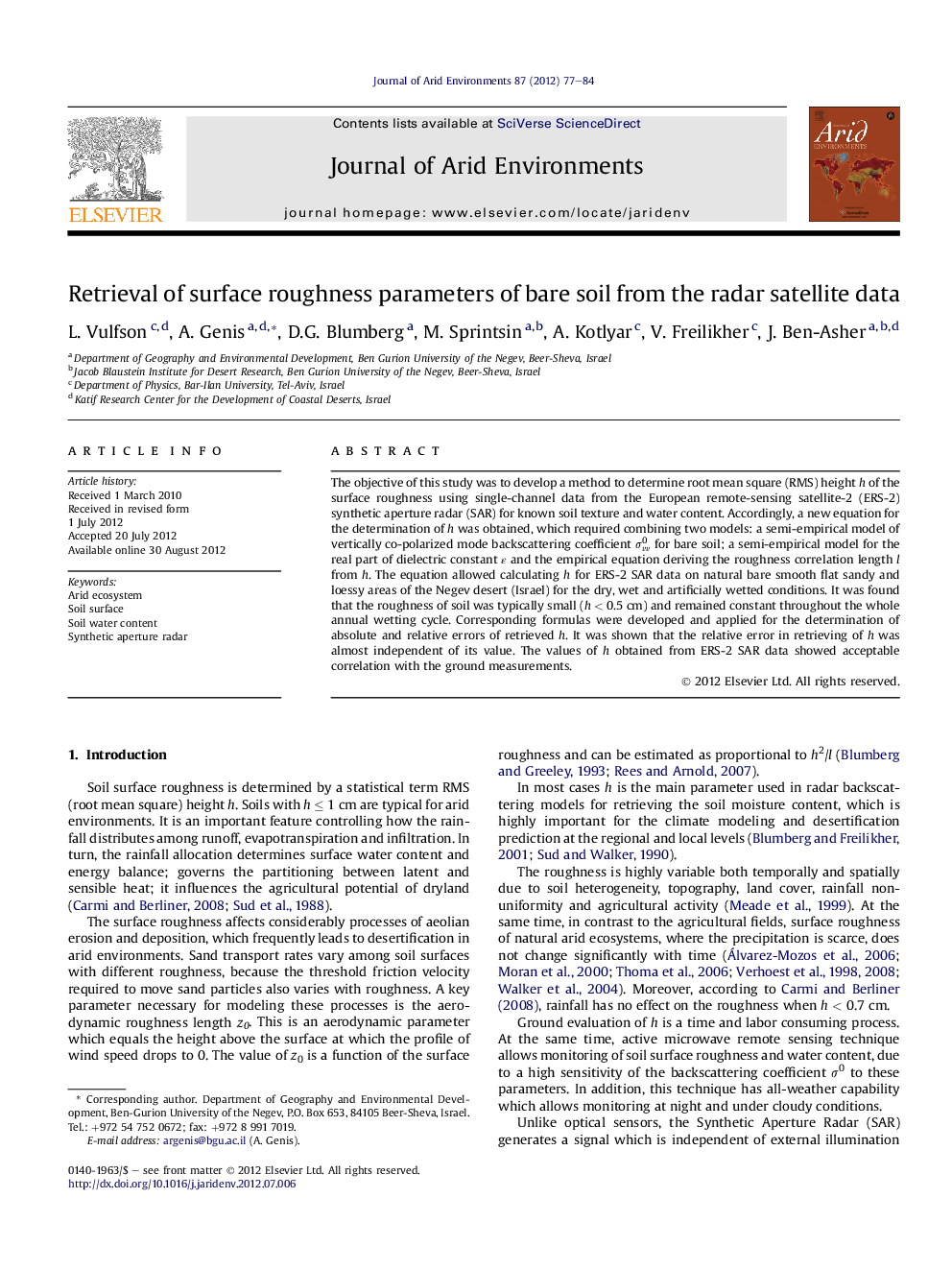| Article ID | Journal | Published Year | Pages | File Type |
|---|---|---|---|---|
| 6303621 | Journal of Arid Environments | 2012 | 8 Pages |
The objective of this study was to develop a method to determine root mean square (RMS) height h of the surface roughness using single-channel data from the European remote-sensing satellite-2 (ERS-2) synthetic aperture radar (SAR) for known soil texture and water content. Accordingly, a new equation for the determination of h was obtained, which required combining two models: a semi-empirical model of vertically co-polarized mode backscattering coefficient Ïvv0 for bare soil; a semi-empirical model for the real part of dielectric constant ε and the empirical equation deriving the roughness correlation length l from h. The equation allowed calculating h for ERS-2 SAR data on natural bare smooth flat sandy and loessy areas of the Negev desert (Israel) for the dry, wet and artificially wetted conditions. It was found that the roughness of soil was typically small (h < 0.5 cm) and remained constant throughout the whole annual wetting cycle. Corresponding formulas were developed and applied for the determination of absolute and relative errors of retrieved h. It was shown that the relative error in retrieving of h was almost independent of its value. The values of h obtained from ERS-2 SAR data showed acceptable correlation with the ground measurements.
⺠Parameters of soil surface roughness can be retrieved from satellite images. ⺠No need in laborious measurements of soil water content during the dry period. ⺠In arid lands soil roughness remains constant during the annual wetting cycle. ⺠Retrieved roughness is used to retrieve soil water content during the wet period.
